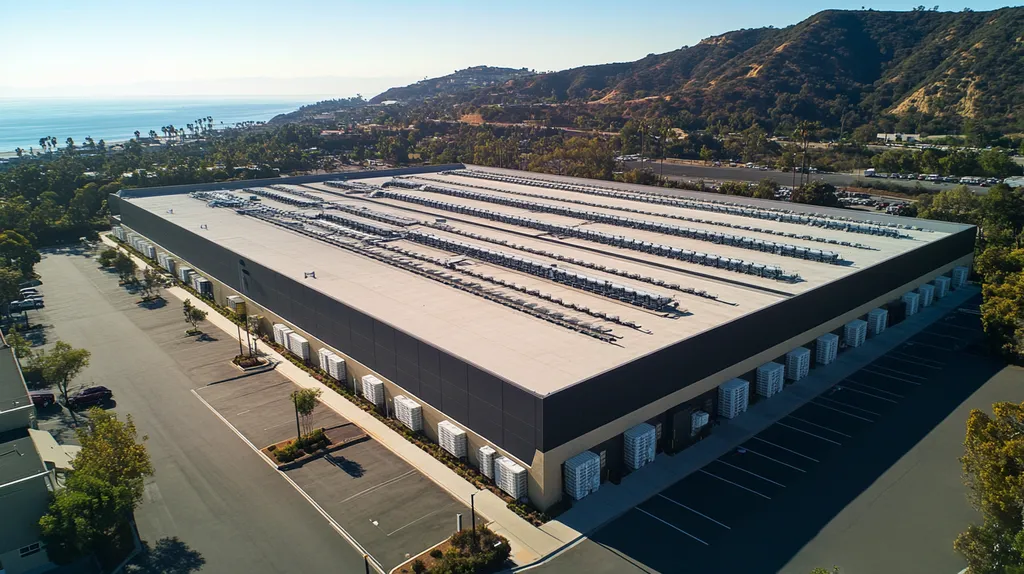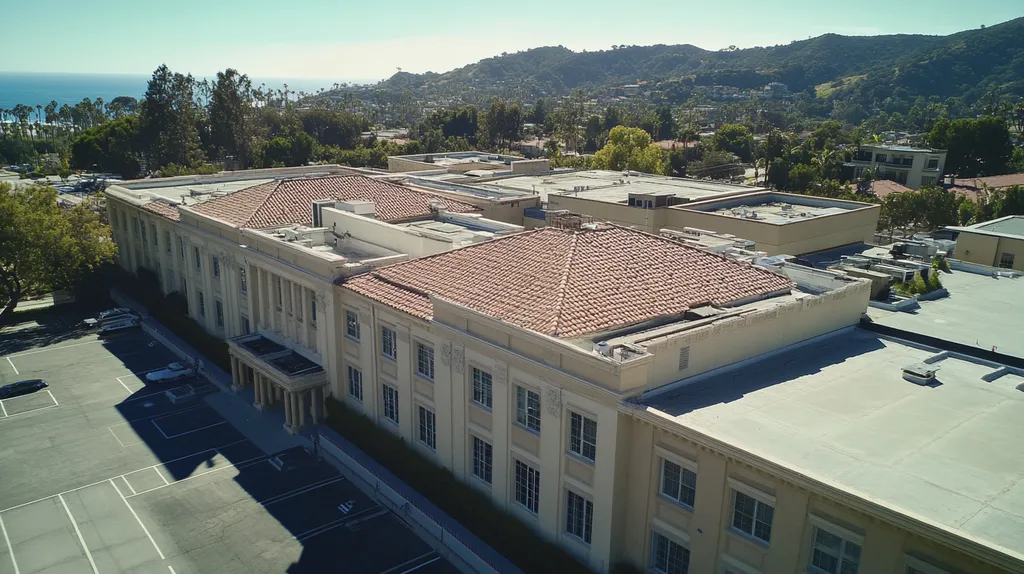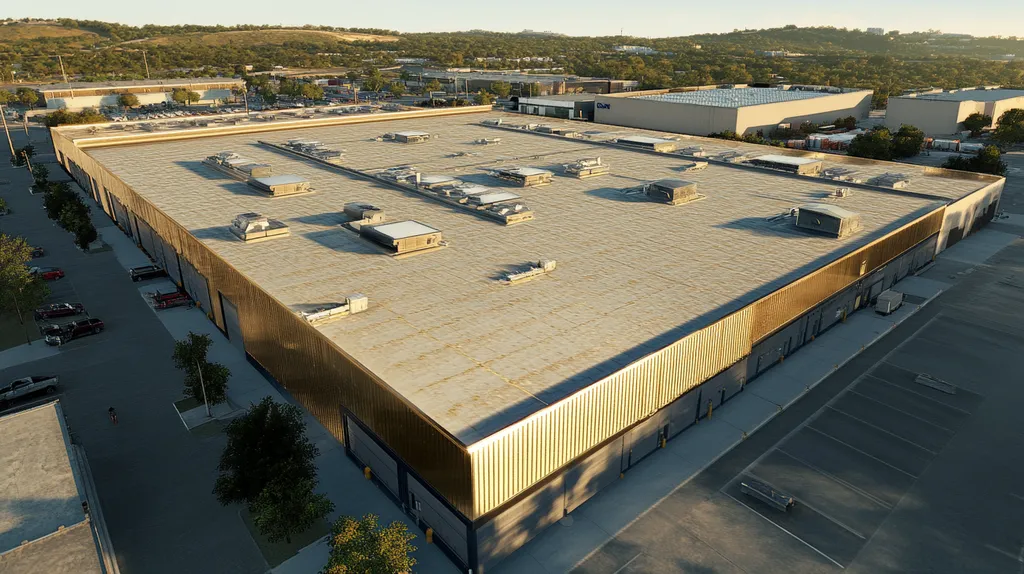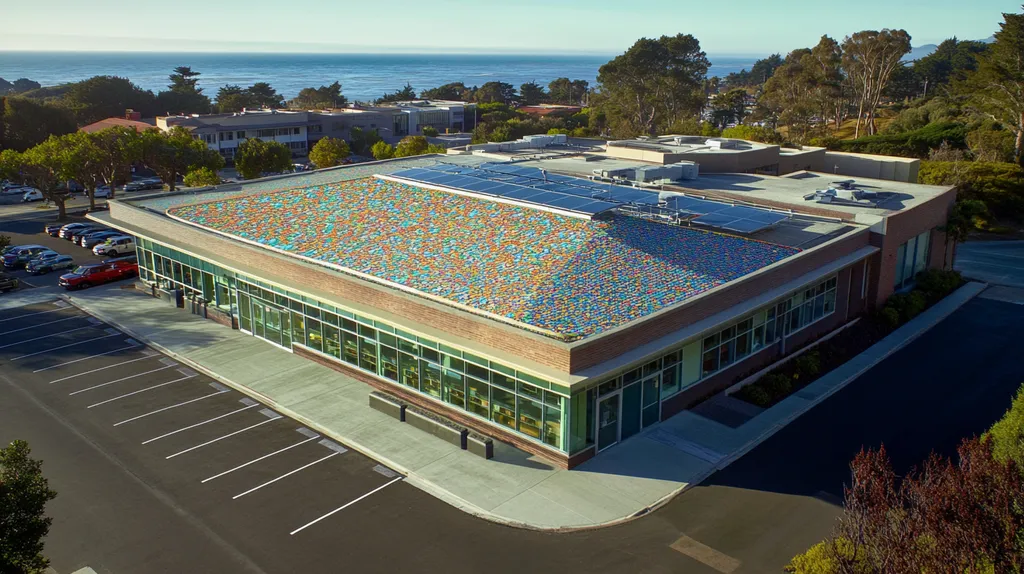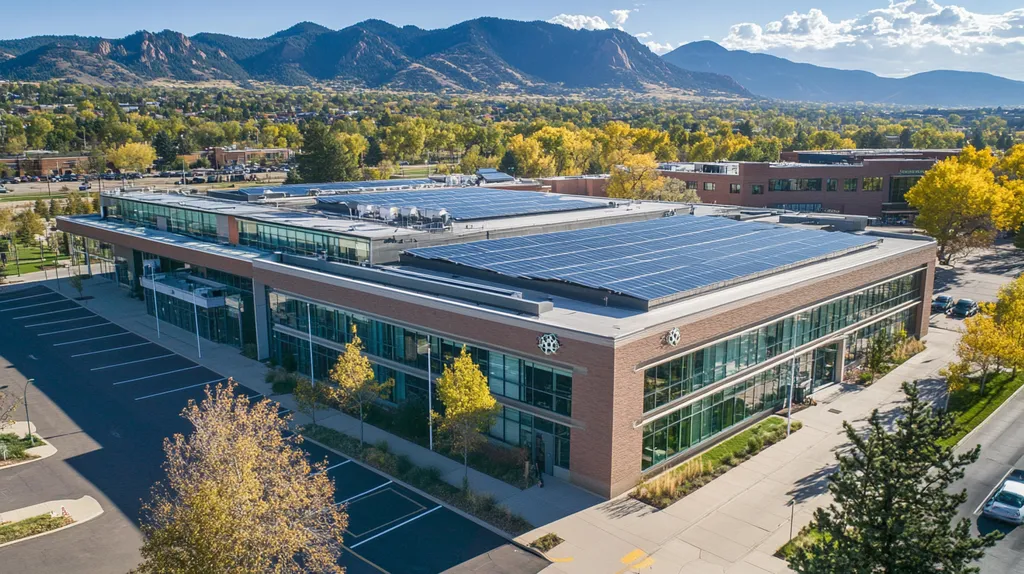Commercial roof warranties represent a critical safeguard for business assets, yet studies show that 70% of warranty claims are denied due to non-compliance with basic terms and conditions. This oversight costs property owners millions in unexpected repairs annually.
Understanding and following warranty requirements isn’t just about paperwork – it’s about protecting substantial investments in commercial properties and ensuring business continuity. From maintenance schedules to approved materials, every detail matters.
This comprehensive guide breaks down essential warranty compliance requirements, common pitfalls, and practical strategies that every property owner and facility manager needs to know to maintain valid coverage and maximize roof longevity.
SECTION 1: THE BASICS EXPLAINED
Grasping the terms of a commercial roof warranty is essential for property owners and facility managers. A roof is a major investment, and any gaps in understanding can lead to costly repairs or significant financial losses. For instance, studies show that overlooking maintenance requirements can void warranties, resulting in unexpected out-of-pocket expenses. In this section, we will break down warranty terms, spotlight their importance, and explain how they function.
What It Is (In Plain Language)
A commercial roof warranty is a formal agreement between the property owner and the roofing manufacturer or contractor that defines coverage for defects or failures. It outlines what is included, how long the warranty lasts, and the specific conditions for its validity. Fully understanding this document is vital for protecting your roofing investment.
Typically, warranties cover two primary areas: materials and workmanship. Material warranties guarantee that the selected roofing materials will perform as promised, while workmanship warranties confirm that the installation was executed correctly. Property managers must have a solid understanding of these components to avoid being left unprotected when issues arise.
Common warranty exclusions often stem from negligence, lack of maintenance, or misuse of the roof. For example, if a storm causes damage but routine inspections and maintenance weren’t performed, the warranty may not cover the repairs. This makes it crucial for property owners to be well-versed in warranty details to ensure compliance.
In essence, a commercial roof warranty serves as a safeguard against potential issues, but it necessitates proactive management to maintain its effectiveness. Neglecting these responsibilities can lead to dire consequences, ranging from sky-high repair bills to a total loss of coverage.
Why It Matters (To Your Building)
Adhering to warranty terms directly impacts the lifespan and performance of a roofing system. A well-kept roof can significantly extend its life, potentially saving businesses thousands in replacement and repair costs. Ignoring warranty requirements, however, can lead to unexpected expenses and liabilities.
Statistics indicate that roofs subjected to regular inspections face a much lower risk of sudden failure. For property owners, this statistic underscores the financial benefits of warranty compliance. It’s not merely about fulfilling contractual obligations; it’s about securing the value and safety of the entire structure.
Furthermore, non-compliance can also hinder future insurance claims. Insurance companies often seek documentation of regular maintenance to support claims. If warranty stipulations aren’t met, property owners may confront denial of coverage, leaving them financially exposed during challenging times.
Ultimately, understanding and adhering to warranty terms is a cornerstone of responsible property management. Such diligence enhances the overall integrity of the building and safeguards investments over the long haul.
How It Works
The functioning of a commercial roof warranty revolves around a few essential principles. Firstly, the warranty specifies certain actions that property owners must undertake to keep coverage intact. This often involves routine inspections, ongoing maintenance, and promptly reporting any issues.
Many manufacturers require annual inspections performed by a certified contractor. If property owners fail to meet these guidelines, they risk voiding the warranty. Additionally, owners should document these inspections to present proof in the event of a claim.
The warranty also details the claims process, including timeframes and specific forms that need to be submitted. Familiarity with this process can expedite the handling of claims and prevent delays in receiving compensation for covered damages.
Lastly, it’s crucial to note that warranty coverage can vary considerably. Some warranties provide broad protection, while others may cover only specific types of damage. Evaluating these distinctions enables property owners to make informed decisions about their roofing investments.
SECTION 2: PRACTICAL APPLICATIONS
Understanding commercial roof warranty terms is not just beneficial—it’s essential for property owners. Compliance safeguards investments and enhances the roof’s lifespan. Ignoring warranty requirements can lead to expensive repairs and a decrease in property value. Alarmingly, nearly 40% of commercial roofs fail prematurely due to non-compliance with warranty stipulations. This section explores real-world scenarios, pivotal moments for compliance, and the interplay between roofing and other critical building systems.
Common Uses & Examples
Many business owners tend to overlook warranty details until an issue arises. One prominent requirement is regular inspections; most warranties necessitate inspections at least twice a year. Failing to carry out these inspections risk voiding the warranty.
Another crucial aspect is the use of approved materials. Many warranties clearly specify which products can be used for repairs or modifications. Employing non-approved materials can lead to claim denials and significant financial setbacks.
Thorough documentation cannot be overstated. Many property owners fail to keep detailed records of maintenance and repairs. This failure can complicate warranty claims when problems occur.
By proactively addressing these common issues, property owners can prevent significant complications down the line. A comprehensive understanding of warranty stipulations ensures compliance and maximizes effective warranty utilization.
When You Need It Most
Knowing when compliance becomes critical is key to maintaining a healthy roof. Seasonal changes often place additional stress on roofing systems. For example, winter storms can worsen existing vulnerabilities, making it vital for property owners to schedule inspections accordingly.
Moreover, after extreme weather events, assessing roof integrity is essential. Many warranties require inspections within a specific period following severe weather. Missing this window can lead to repairs being uncovered by the warranty, resulting in substantial costs.
Understanding the claims process outlined in warranty terms is particularly vital during urgent situations. Knowing which documents to gather and how to initiate a claim can expedite recovery, reducing potential downtime for businesses.
Awareness of these critical periods encourages property owners to adopt a proactive approach to maintain roofing integrity. This diligence not only protects the roof but also stabilizes business operations.
Interactions With Other Systems
A commercial roof doesn’t function in isolation; it collaborates closely with multiple building systems. HVAC systems typically penetrate the roof, and if these penetrations aren’t sealed or maintained properly, leaks can ensue, jeopardizing the warranty.
Effective roof maintenance should also align with other building services, such as plumbing and electrical systems. Overlooking their interaction during inspections can lead to compliance failures and unexpected costs.
Furthermore, landscaping and drainage systems greatly influence roof performance. Clogged gutters can trap water on the roof, raising the risk of damage. Regular monitoring of these connections is often highlighted in warranty terms.
A thorough understanding of how the roof interacts with other building systems is crucial for maintaining compliance. By effectively managing these interactions, property owners foster a holistic approach to roofing maintenance, ultimately preserving the integrity of the entire structure.
SECTION 3: KEY TERMINOLOGY DECODED
Grasping the terminology surrounding roofing warranties is essential for commercial property owners. Misunderstandings can lead to financial losses and denied claims when issues arise. Alarmingly, nearly 60% of facility managers admit to being unaware of significant warranty requirements. This section unpacks essential terms, empowering decision-makers with the knowledge required for both compliance and protection.
Essential Terms Explained
Commercial roofing warranties frequently use terms like “limited warranty” and “full warranty.” A limited warranty typically covers specific issues, whereas a full warranty delivers comprehensive protection, including both labor and materials. Understanding these distinctions ensures property owners know exactly what is covered and for how long.
Another vital term is “exclusions,” referring to conditions that void warranty coverage. For example, damage from improper maintenance or natural disasters may not be included. Knowing these exclusions is essential for avoiding unexpected expenses post-roof failure.
“Wear and tear” often crops up in warranty discussions. This term denotes damage that happens over time from regular use and environmental exposure. Many warranties exclude these issues, highlighting the importance of implementing preventive maintenance strategies.
Finally, “overlays” relate to roof replacement scenarios. An overlay means placing a new roof on top of an existing one, which may sometimes void existing warranties. Understanding this term helps property managers make informed decisions to avoid jeopardizing future warranty claims.
Industry Jargon Translated
The roofing industry contains specific phrases like “flashings” and “drainage systems,” which may confuse those not familiar with the field. Flashings are crucial metal components that prevent water from infiltrating joints and seams. Appreciating their significance can save property owners from severe water damage and related warranty issues.
“TPO” and “EPDM” are common roofing material acronyms standing for thermoplastic olefin and ethylene propylene diene monomer. Each carries specific properties and warranty terms, making it vital for property owners to select the right material matching their needs and budget.
Another significant term is “roof inspection,” referring to the systematic evaluation of a roof’s condition and performance. Many warranties require documented inspections to remain valid, thus underscoring the necessity for ongoing maintenance and compliance.
Lastly, terms such as “redline” and “letter of transmittal” pertain to contract negotiations. A redline indicates changes made to a document, while a letter of transmittal accompanies a contract to clarify those changes. Familiarity with these terms will enable property owners to engage effectively with roofing professionals during warranty conversations.
Measurement & Units Simplified
Roofing warranties often reference measurements in square feet or squares. One square equals 100 square feet, simplifying calculations for property owners when assessing coverage. Understanding this unit is crucial for determining how much material will be necessary for repairs or replacements.
Another essential measurement is “slope,” usually expressed as a ratio. For example, a 4:12 slope indicates the roof rises 4 inches for every 12 inches horizontally. This slope impacts drainage and warranty applicability, making it critical to choose compatible materials and designs.
Additionally, “R-value” signifies a roof’s insulating efficiency. A higher R-value corresponds to better insulation. When selecting roofing materials, grasping this value aids property owners in understanding energy efficiency and potential long-term savings.
Finally, it’s vital to comprehend “warranted life.” This term highlights how long a warranty remains effective and is often tied to specific terms and conditions. Property managers should actively track these timelines to ensure compliance and protect against unanticipated repair costs.
SECTION 4: DECISION FACTORS
When considering a commercial roofing system, property owners confront pivotal decisions that can dramatically affect their financial security. While compliance with warranty terms appears straightforward, neglecting cost, performance, and durability aspects can lead to unexpected expenses that far exceed initial savings. For instance, opting for a subpar roofing solution might result in significant repair costs or even an early replacement. Recognizing these decision factors is essential for ensuring the roof’s longevity and overall effectiveness.
Cost Considerations
Cost is often the first factor on property owners’ minds when selecting a roofing system. However, the lowest initial bid does not always equate to a wise investment. A roof chosen solely for its low price may lead to unforeseen warranty issues, ultimately inflating the total cost of ownership.
For instance, some materials might be cheaper upfront but are susceptible to failures that can void warranties entirely. Property owners must carefully weigh these risks against investing in quality materials that offer better long-term value and reliability.
Additionally, hidden costs such as inadequate drainage or insulation can escalate expenses over time. Conducting a thorough cost-benefit analysis is crucial before making any decisions, ensuring compliance with warranty terms and leading to a more dependable roofing solution.
Performance Trade-offs
Performance is another critical factor influencing roofing choices. Different materials and systems provide diverse benefits, such as energy efficiency, weather resistance, and visual appeal. Each option comes with its own performance trade-offs, which should align with the specific needs of the building.
For example, a roofing system that excels in insulation may require a higher initial investment. However, the resulting energy savings can more than compensate for this expense in the long run. In contrast, a low-cost roofing option may falter under harsh weather, leading to damage that voids warranty coverage.
The contractor’s expertise also plays a significant role in performance. A skilled contractor will ensure that installation meets all warranty requirements, while improper installation can lead to subpar performance and future complications. Evaluating performance trade-offs empowers property owners to select a solution that meets both immediate needs and long-term durability.
Lifespan & Durability Factors
The expected lifespan and durability of a roofing system are crucial for maintaining compliance with warranty terms. Many commercial roofs come with warranties tied to specific longevity expectations. Selecting a system known for its durability can significantly reduce the frequency of repairs and replacements.
Different roofing types—such as TPO, EPDM, or metal—each offer unique durability characteristics and lifespan guarantees. For example, metal roofs can last up to 50 years under ideal conditions, while some single-ply options may only last 20-30 years.
Furthermore, environmental factors, such as local climate conditions, greatly affect a roof’s longevity. Roofs situated in regions prone to severe weather may necessitate more robust solutions to prevent premature failure.
Investing in a durable roofing system not only reinforces compliance with warranty terms but also enhances the overall value of the building. A long-lasting roof minimizes disruptions and positively contributes to a company’s financial health.
SECTION 5: COMMON CHALLENGES
Navigating the intricacies of commercial roof warranty terms can significantly impact the financial health of a business. Many property owners stumble over essential terms and conditions, which can lead to expensive repairs. Alarmingly, studies reveal that nearly 30% of businesses encounter warranty claims due to non-compliance with these stipulations. This section delves into frequent challenges, warning signs to look for, and proactive measures to prevent roofing issues while ensuring compliance.
Frequent Problems & Solutions
A key challenge faced by many property owners is the failure to conduct routine inspections. Without regular evaluation, hidden issues like leaks or membrane deterioration may go undetected, voiding warranty protections. It is highly recommended to schedule bi-annual inspections with a certified roofing professional to thoroughly address all warranty conditions.
Improper installation is another critical issue that can nullify a warranty and create severe structural problems. Choosing a reputable contractor who has extensive experience with the specific roofing system is essential to avoid such costly mistakes.
Many property owners also mishandle documentation. Missing or incomplete records can jeopardize warranty claims. It’s crucial to maintain a detailed log of all maintenance activities, inspections, and repairs to protect warranty rights.
Finally, homeowners must pay close attention to the manufacturer’s guidance, as each roofing system has unique compliance requirements. Strictly adhering to the manufacturer’s specifications during maintenance and inspections can minimize risks associated with warranty claims.
Warning Signs To Watch For
Property owners should remain vigilant for early warning signs of deterioration. Curling or missing shingles can indicate failing materials; these issues may not be covered if not reported promptly. Regular monitoring of the roof for these visible signs is essential for early intervention.
A loss of granules on asphalt shingles often signals aging materials and possible warranty complications. If left unchecked, this can lead to leaks and further damage. Regular inspections should include evaluating granule loss to ensure warranty compliance.
Ponding water is another critical warning sign, indicating drainage issues that can severely affect roofing integrity. Identifying and addressing drainage problems quickly is vital for maintaining warranty protections.
Lastly, be alert to unexpected spikes in energy costs. Such increases can subtly indicate deeper roof issues with insulation or ventilation that might not be immediately apparent but are crucial for compliance.
Preventative Approaches
Establishing a rigorous maintenance schedule is the frontline defense against common roofing problems. Regular upkeep, such as cleaning debris and checking for leaks, greatly contributes to the roof’s longevity and helps maintain warranty validity.
Educating staff is also essential. Facility managers should receive thorough training to understand warranty terms and ensure that everyone involved in roof care adheres to compliance standards. This knowledge can prevent expensive oversight.
Building solid relationships with contractors facilitates better communication regarding warranty obligations. Regular discussions can help identify potential concerns before they morph into significant problems, ensuring compliance with warranty terms.
Finally, engaging a roofing consultant can provide valuable insights into effective compliance strategies. This proactive approach can prevent potential warranty disputes, resulting in a more resilient roofing system that stands the test of time.
SECTION 6: NEXT STEPS & RESOURCES
Understanding roof warranties is not just beneficial; it is essential for safeguarding your investments in commercial properties. Neglecting warranty terms can lead to costly repairs, voided coverage, and even shortened roof lifespans—statistics indicate that improper maintenance can reduce a roof’s effectiveness by up to 50%. In this section, we will highlight crucial questions to pose to service providers, outline industry standards to follow, and present additional resources for enhancing your knowledge.
Questions To Ask Providers
Before selecting a roofing provider, it’s vital for business owners to ask concise and insightful questions to confirm compliance with warranty terms. Start by inquiring about specific warranty coverage details and duration so you know what is protected and for how long.
Next, ask about the maintenance requirements necessary to keep the warranty valid. Understanding these obligations is crucial; failing to comply can lead to hefty expenses.
It’s also important to determine which materials and installation techniques the provider plans to use. These elements often influence warranty terms and coverage.
Lastly, ensure that the provider offers ongoing support throughout the warranty period. Clear communication and transparency can help prevent any misunderstandings moving forward.
Industry Standards & Guidelines
A solid grasp of industry standards is essential for ensuring compliance with warranty terms. Organizations like the National Roofing Contractors Association (NRCA) offer valuable guidelines regarding installation and maintenance practices.
Business owners must also pay close attention to the manufacturer’s recommendations, as many warranties have specific requirements for inspection intervals and maintenance protocols.
Remaining informed about local building codes is equally important, as these regulations can affect both roof installation and ongoing care. Ignoring these codes can lead to warranty voids.
Continuous training and education for facility managers on these standards will not only enhance compliance but also extend the lifespan of the roof.
Further Learning Simplified
For business owners eager to expand their knowledge of roof warranties, multiple resources are readily available. Online platforms and industry associations frequently offer webinars and workshops that focus on compliance best practices.
Books and articles covering roofing terminology and maintenance strategies provide an excellent foundation, empowering property owners to ask informed questions.
Additionally, networking with peers in the industry can uncover first-hand experiences and insights related to warranty compliance. Such exchanges can clarify best practices and highlight emerging trends.
Investing time in these learning opportunities can deliver significant returns, ensuring adequate maintenance and adherence to warranty conditions.
The Bottom Line
With over 70% of commercial roof warranty claims being denied due to non-compliance, understanding and following warranty terms isn’t optional—it’s essential for business survival.
The financial stakes are simply too high to ignore, as a single denied claim can cost property owners hundreds of thousands in unexpected repairs.
Successful warranty compliance requires three critical elements: regular professional inspections, meticulous documentation, and strict adherence to manufacturer maintenance requirements.
Moving forward, property owners must treat their roof warranty as a living document that demands ongoing attention and proactive management.
By implementing the strategies outlined in this guide, businesses can maintain valid warranty coverage, maximize roof longevity, and protect their valuable commercial assets for decades to come.
FREQUENTLY ASKED QUESTIONS
Q. What is a commercial roof warranty?
A. A commercial roof warranty is a formal agreement between you and the roofing manufacturer. It details coverage for defects or failures, along with conditions for maintaining that coverage. Understanding these details is crucial to ensure your investment is protected against unexpected issues.
Q. How do compliance issues affect my commercial roof?
A. Compliance issues can significantly shorten your roof’s lifespan and leave you financially exposed. For instance, incomplete inspections or using non-approved materials can result in costly repairs or voiding the warranty. Regular maintenance and attention to compliance can protect your financial interests.
Q. What are common terms I should know for commercial roofs?
A. Familiarizing yourself with terms like “limited warranty” and “exclusions” is essential. A limited warranty covers specific issues while exclusions detail conditions that void coverage. Understanding these terms helps you navigate your warranty effectively and prevents expensive surprises down the line.
Q. How important is documentation for my industrial roof warranty?
A. Documentation plays a crucial role in maintaining your warranty. Keeping accurate records of inspections, maintenance, and repairs can make or break a claim if an issue arises. Staying organized with these documents ensures your compliance and protects your investment from unforeseen costs.
Q. What challenges might I face regarding commercial roof warranties?
A. One major challenge is failing to conduct regular inspections. This oversight can lead to undetected issues, thereby voiding your warranty. Additionally, improper installations can create long-term complications. Being proactive about inspections and hiring qualified contractors helps mitigate these risks effectively.
Q. What questions should I ask my roofing provider?
A. Ask about the specifics of warranty coverage, including duration and maintenance requirements. Inquire about the materials they will use and whether they adhere to the warranty guidelines. Also, ensure they provide ongoing support throughout the warranty period for clarification and assistance.
Q. How does local climate impact commercial roof warranties?
A. Local climate can significantly affect the performance and longevity of your roof. Extreme weather conditions may necessitate more robust roofing materials to prevent premature failure. Understanding how climate impacts your roofing system helps you select suitable materials and meet warranty requirements effectively.


